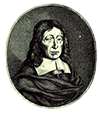Since the 19th century, Carnival has been a secular ritual practiced by New Orleanians and visitors from around the world, its survival and character secured by the precedent of Milton's Comus. Tulane University sociologist Kevin Gotham elaborates on this history in the video.
In December 1856, six Anglo-American New Orleans businessmen [1], formerly of Moblile, Alabama, gathered at a clubroom above the now-defunct Gem Restaurant in New Orleans' French Quarter [2] to organize a secret society to observe Mardi Gras in a less crude fashion than in Mobile[3]. The inspiration for the name of the group came from John Milton's Lord of Misrule in his masque Comus. One Mardi Gras historian describes the Mistick Krewe's creation in New Orleans thus: "It was Comus who in 1857 saved and transformed the dying flame of the old Creole Carnival with his enchanter's cup; it was Comus who introduced torch-lit and thematic floats to Mardi Gras processions; and it was Comus who ritually closed, and still closes, the most cherished festivities of New Orleans splendor and pomp." [4] Comus' first-night parade – replete with torches (later called "flambeau), marching bands and rolling floats – was wildly popular with Carnival revelers. So popular was the first Comus parade that the prospect of the second one attracted thousands of out-of-town visitors to New Orleans for the first time. [5]
Comus has jealously guarded the identities of its membership and the privacy of its activities (other than the parade), perhaps even more than the other Carnival organizations that subscribe to the traditional code of secrecy. Carnival legend has it that admittance to the Comus Mistick Krewe's ball was so highly sought-after that a group of uninvited ladies formed a flying wedge and attempted to force their way into the Comus ball. In other years uninvited persons have tried to beg, buy, or steal invitations to the Comus ball.[2] Even after the ball is over Comus invitations are prized by collectors as they are uncommonly beautiful and rare. On Mardi Gras night Comus provided the final parade of the New Orleans Carnival season for over 100 years. It was much smaller and more sedate than the other parades of the day put on by Rex and Zulu Krewes. The Comus parades were known for their sometimes obscure themes relating to ancient history and mythology. While other parades had themes like "Foods of the World" or Broadway Show Tunes," Comus presented themes like "Serpent Deities of the Ancient Near-East."
In 1991 the New Orleans city council required social organizations including the Mardi Gras Krewes to abandon their traditional code of secrecy and identify their members to the city's Human Relations Commission. Along with the Momus and Rex Krewes, Comus then withdrew from parading, rather than identify it membership. Two Federal Courts declared the city ordinance a violation of First Amendment rights of free association and an unwarranted intrusion on the privacy of such groups, but since then Comus has refused to reinstate its parade, though it still holds its annual ball on Mardi Gras Night (see next video).
References
1. All on a Mardi Gras Day: Episodes in the History of New Orleans Carnival, Reid Mitchell, Harvard U.P, 1995
2. Arthur B. LaCour, New Orleans Masquerade: Chronicles of Carnival, Pelican, 1952.
3. Carnival/Mobile Mardi Gras Timeline [1852], Museum of Mobile 2002.
4. Henri Schindler, Mardi Gras Treasures: Invitations of the Golden Age, Pelican, 2000 (p.13).
5. Robert Tallant, Mardi Gras, Pelican, 1976 (p.117).
